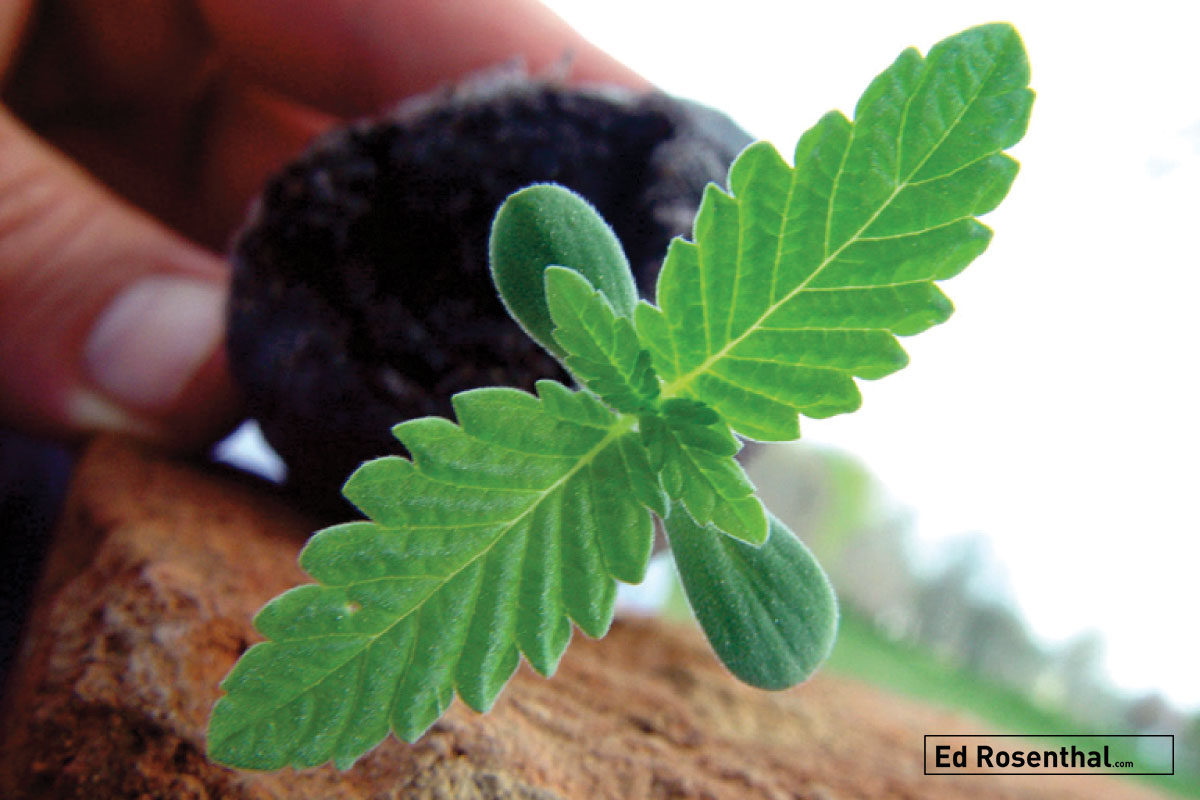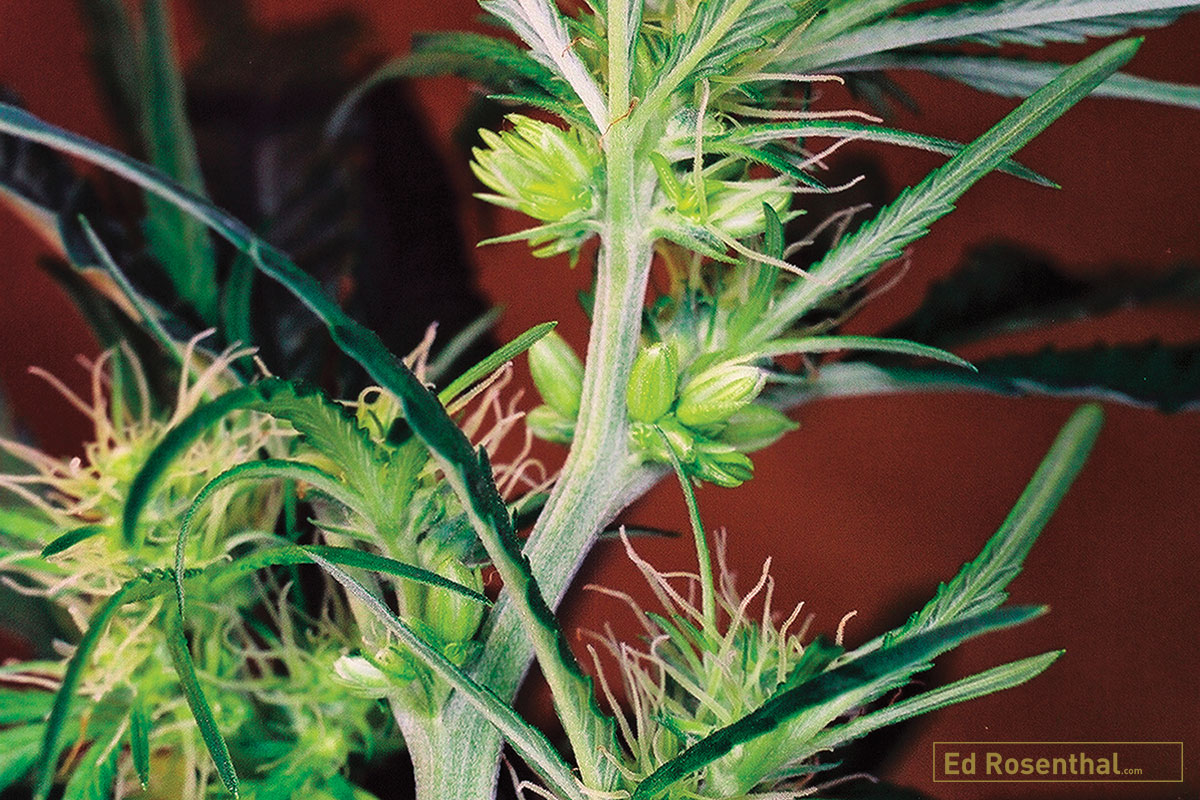Feminized Seeds: What they are and the top methods used to produce them
Cannabis sprout.
Feminized seeds produce only female plants, and when they germinate there will be few males among them if they are produced correctly. The threat of accidentally pollinating crops by misidentifying a male is minimized. A male-free crop is only one reason to use all-female seeds: another might be the preservation of a particular characteristic or plant type.
Close up: Female calyx.
The predominant way to preserve the exact genetics of a plant is by cloning. However, a plant crossed with itself produces seeds that retain its parent’s favorable characteristics. Another reason to use this technique is to create a hybrid of two female plants. If a branch of one female is turned “male,” there will be pollen to fertilize the other plant, and to create seed when no male is around. Feminized seeds are produced by inducing a normal female, not a hermaphrodite, to grow male flowers with viable pollen.
Close up: Female.
The pollen contains only female, or X, chromosomes because the plant has no Y, or male, chromosomes. The progeny will inherit an X from the male flower’s pollen and an X from the egg donor female flower. The resulting seeds can only inherit two X chromosomes, which means that almost all the resulting seeds will be girls! Congratulations!
Close up: Early male buds.
Feminized seeds are not as mysterious or weird as they might seem
In mature human females, taking male hormones causes masculinizing changes such as breast shrinkage, muscle bulking, and a lowering in voice pitch. The primary sex organs have already been formed, but they shrink.
A similar thing happens when female plants are treated with masculinizing chemicals. The difference is that while a mature human has already formed her sex organs, every time a plant produces a new flower, it is growing a new sex organ. Plants under chemical influence grow viable male flowers, even though the plant is still a female with two X chromosomes, the pollen has only female chromosomes.
Male flower.
There are several methods used to produce feminized seed
By far, the noted breeder Soma developed the easiest method. He noticed that when colas of many varieties reached late ripeness (which, by the way, I prefer as the harvest-time) a few viable male flowers appear. This is also a sign that the buds are ripe. Harvest the pollen using a fresh watercolor brush and brush it directly on the flowers or store it in a small glass or metal container. Not all varieties produce male flowers at the end of ripeness, but many do, and they do it reliably. Very small amounts of pollen are produced using this method, but a little pollen applied properly goes a long way.
Hermaphrodite cannabis plant.
Some varieties flower normally outdoors but experience indoor growing conditions as stressful and produce hermaphrodite flowers. The pollen from these male flowers can be used for breeding, provided that the resulting plants are going to be grown outdoors, where they won’t exhibit the unwanted hermaphroditism. Plant stresses such as irregular light cycles and heat sometimes induce hermaphroditism. However, stress techniques are not reliable. They only seem to work when you don’t want them to, and I haven’t found a stress regimen that ensures masculinization. Should this happen accidentally in a garden with a valuable variety, be opportunistic and collect the pollen, even if you have no plans to use it.
Laboratories and commercial seed producers use three chemicals to induce male flowers in female plants: gibberellic acid, silver nitrate, and silver thiosulfate
Spraying commercial spray on a group of plants.
They each inhibit the plant’s production of ethylene, a hormone that promotes female flowering. Without ethylene, female flower production is reduced or stopped. The actions of these chemicals are localized. If only one branch of a plant is sprayed, that branch will be the only one affected. The rest of the plant will continue growing female flowers, not males.
Close up: Male flower.
Gibberellins are hormones that plants produce to regulate many phases of their growth. Several of the gibberellins, such as GA3, 4, 5 and 7, induce male flowers when they are sprayed on female plants before they begin flowering. GA3, which is the gibberellin most commonly available commercially, is the most effective. For best results, use a solution of 0.01% (0.1 gram GA3 in a liter of distilled water). Gibberellin must be used carefully. Lower doses result in fewer male flowers. Higher amounts have an inhibitory effect. Lightly spray the tops of the plant for five consecutive days and then force the plants to flower by increasing the uninterrupted dark period to 12 hours a day. The sprayed area will stretch a bit, but within two weeks, the first signs of male flowers will appear. They will be ripe and ready to release pollen in another two weeks.
Male cannabis flower.
Silver thiosulfate is more effective than silver nitrate; that is, it induces more male flowers. Sometimes the two chemicals are used together. Spray the plant until the liquid drips off the leaves. Then immediately change the light regimen from vegetative to flowering. The leaves will droop and stop growing for a few days, yellow a bit and then regain turgidity. Male flower growth will become apparent in a couple of weeks. The flowers will ripen a few weeks later.
Silver thiosulfate is made by combining two water solutions, one containing silver nitrate and the other, sodium thiosulfate. Silver nitrate alone can also be used to induce male flowers. Spray a solution of 0.02- 0.03% on the plant, and then turn the lights to a 12-hour flowering cycle. The leaves will droop for a day or so and then resume turgidity. Male flower growth will become apparent in a couple of weeks and ripen a few weeks later. To make a 0.02% solution, add 0.1 gram of silver nitrate in 0.5 liters of dis- tilled water.
Because of market demand, almost all the seed companies offer most of their popular varieties as feminized seed. They are the best choice for most gardeners. The exception is gardeners interested in breeding.
Join our cannabis community
Follow Us















